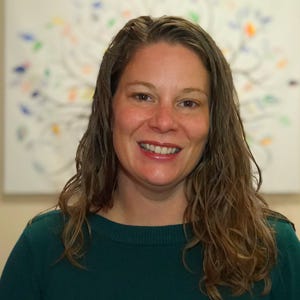Raising awareness about suicide helps reduce stigma and empowers each of us to help
Suicide is a difficult topic for most people to discuss. However, talking about suicide is one of the most effective ways to help prevent it. September is Suicide Prevention Awareness Month, providing the opportunity to raise awareness, reduce the stigma that surrounds this topic and empower each of us to help.
 “Suicide remains a persistent public health crisis,” said Michelle Vargas, director for the Franklin County Suicide Prevention Coalition, one of the suicide prevention and support agencies funded by the Alcohol Drug and Mental Health Board of Franklin County (ADAMH).
“Suicide remains a persistent public health crisis,” said Michelle Vargas, director for the Franklin County Suicide Prevention Coalition, one of the suicide prevention and support agencies funded by the Alcohol Drug and Mental Health Board of Franklin County (ADAMH).
“We consistently see that half of suicide deaths are by firearms, highlighting the importance of safe storage,” said Vargas. “We also see high levels of those who die by suicide having substances in their system, including alcohol, opioids and marijuana, which lower inhibitions and increase risk among individuals with suicidal tendencies.”
 “For every death, there are at least 25 attempts,” said Angela Damon, executive director for LOSS Community Services, an ADAMH-funded agency that provides community education and support to individuals impacted by suicide.
“For every death, there are at least 25 attempts,” said Angela Damon, executive director for LOSS Community Services, an ADAMH-funded agency that provides community education and support to individuals impacted by suicide.
“We need to have greater awareness that many people around us may be struggling in this way, likely even people we know,” Damon said. “Recovery is possible. It is not hopeless and there is help. The first step is normalizing conversations about mental health and treatment.”
“Everyone has a responsibility and a role to play in prevention,” said Vargas. “Each of us has a network of people who we know well enough to see changes in behavior.”
“If you know someone who exhibits signs of suicide, it’s appropriate and recommended to directly ask them if they’re thinking about harming themselves”,” said Vargas. “Often, people fear that they will put the idea into someone’s head if they ask. That has been proven to not be true – but you can establish a trusting relationship simply by asking.”
What to look for in mood and behavior changes:
• Talking to others or posting on social media about suicide or feeling hopeless.• Engaging in self-injurious behavior, including skin cutting, punching walls to induce pain.• Sleeping or eating more or less than usual.• Increasingly feeling isolated or self-isolating.• Feeling depressed or hopeless for two or more weeks.• Increasing use of alcohol or drugs.• Showing rage or talking about seeking revenge.• Displaying extreme mood swings.
In addition, someone who has experienced a close loss due to suicide is at greater risk.
How to help:
It is important to provide support for a person experiencing signs of suicide until professional help is available.• Make sure the person is not left alone unless they pose a threat to the safety of others.• Listen carefully to what the person has to say.• Do not be judgmental, argue with the person or agree to keep their feelings a secret.• Call 988, the Suicide and Crisis Lifeline for help.• In cases of medical emergency, call 911 for assistance.• Take the person to an emergency room or seek help from a medical or mental health professional.
Additional training available:
There are two free ADAMH-funded training programs that can provide anyone with the tools and resources needed to identify signs of suicide in others and how to effectively support those at risk.• Mental Health First Aid, offered through Mental Health America of Ohio, is a six to eight-hour overview of overall mental health, including suicide. One course is available for adults working with other adults. Another course is for adults working with youth.• Question, Persuade, Refer (QPR), offered through LOSS Community Services, is a 90-minute to two-hour training intended for lay people to learn about suicide prevention skills, identifying signs of suicidal crisis, how to respond, engage and connect.
Getting help early is a critical part of prevention. Vargas stresses that individuals should not wait until they are in a mental health crisis to reach out. It is much more effective to seek help when symptoms first appear.
For immediate help, call the Suicide and Crisis Lifeline at 988 or text “4hope” to the Crisis Text Line at 741-741. For a full list of the more than 30 community-based mental health and addiction service providers that make up the ADAMH network of care, visit: adamhfranklin.org.

If you or someone you know needs support now, call or text 988 or chat 988lifeline.org.
Article from Dispatch.com
